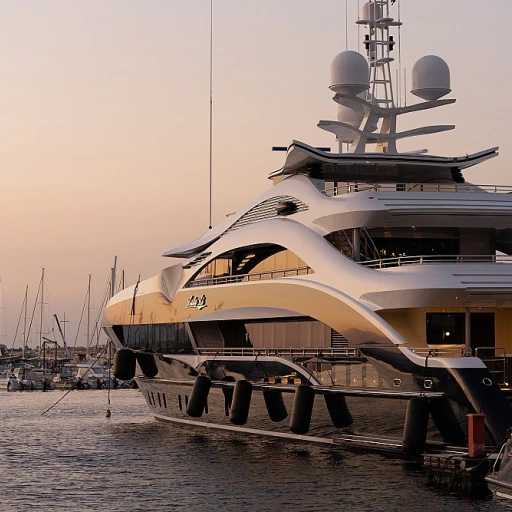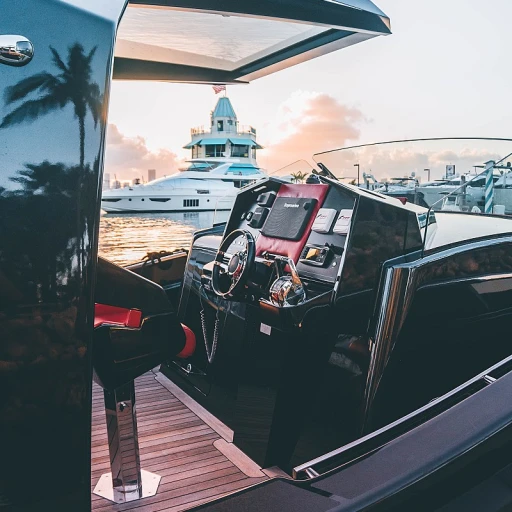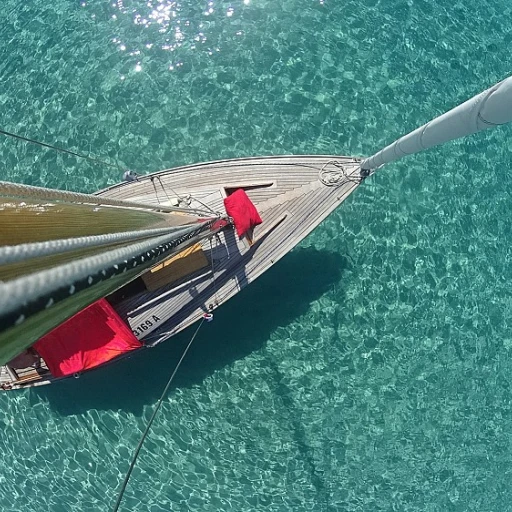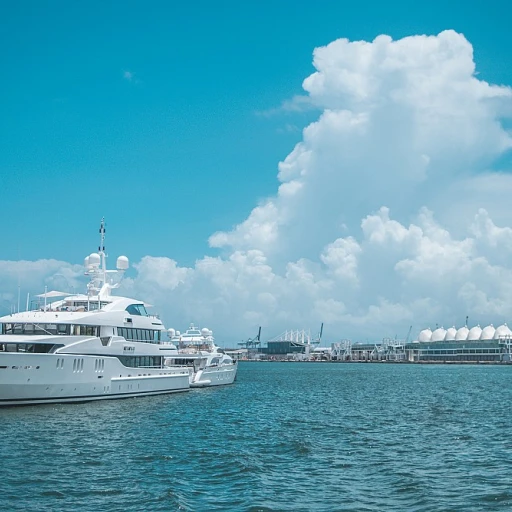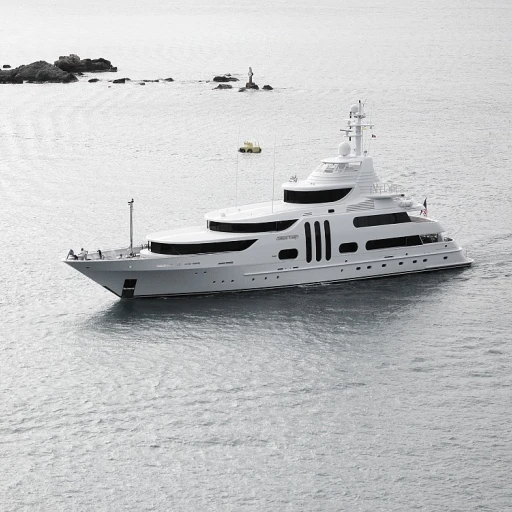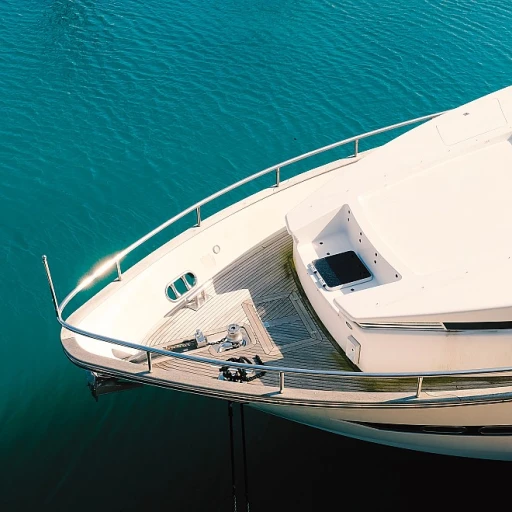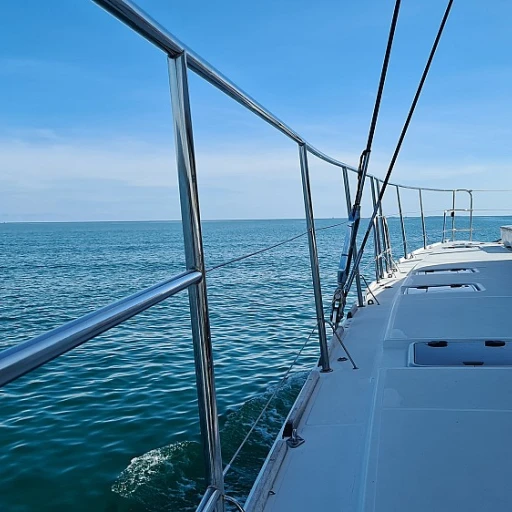
Understanding the Role of Boat Plugs
The Importance of Efficient Boat Plugs for Your Yacht
Understanding the critical role of boat plugs is pivotal for any yacht enthusiast. These humble yet essential accessories are crucial for maintaining the hull integrity and safety of your vessel, ensuring that unwanted water stays out of the inside boat environment. In a marine context, a boat plug, often referred to as a drain plug, acts as a barrier to prevent water ingress into the hull or specific compartments of a yacht. Whether you're combating the everyday splashes or dealing with heavy rain on the open water, a reliable drain plug helps keep your yacht buoyant and comfortable. Regular maintenance of these plugs is imperative for your yacht's longevity. Available in various forms, such as garboard drain plugs and cooler drain plugs, the selection is vast. It's essential to match the npt thread size with your boat's drain hole to ensure a watertight seal. When considering the installation, factors such as the plug's material, like stainless steel or brass, and the ease of install and replace features are crucial. While the unit price can vary, higher-quality plugs often offer better durability. Ignoring the integrity of your boat's plugs can lead to problems that necessitate urgent and sometimes costly fixes. Knowing the types, their specific applications, and potential innovations, which we'll explore further, can provide peace of mind to any yacht operator. To explore more about enhancing your yacht experience, understanding its dimensions, such as a boat's beam, is equally important.Types of Boat Plugs and Their Applications
The Diversity of Boat Plugs
Boat plugs may seem like simple accessories, but their variety and applications prove they are anything but ordinary. Understanding the different types of boat plugs available on the market can help you make informed decisions and ensure your yacht remains well-equipped to handle various marine environments. Firstly, there's the ubiquitous drain plug, a crucial component in managing excess water inside the boat. Drain plugs come in varieties such as brass and stainless steel, catering to specific needs and durability expectations. Stainless steel drain plugs are appreciated for their resistance to corrosion, ensuring longevity in marine environments. Brass drain plugs, on the other hand, provide a classic touch with their distinctive appearance and reliable performance. Providing a tight seal is the NPT (National Pipe Tapered) plug, which is renowned for its precision fit. These plugs are ideal for situations where a secure connection is paramount, such as when interfacing with threaded fittings. Similarly, the garboard drain plug merits attention for its role in safely emptying bilge water. The garboard drain fits into a hole in the stern, allowing for efficient drainage and maintenance of the boat’s dry bilge condition. For those looking to maintain cooler integrity, the cooler drain plug ensures that your portable cooler retains its contents securely without leaks or spills. This particular plug, while not specifically for boats, finds its niche among yacht enthusiasts who enjoy outings with well-packed refreshments. As part of modern innovations, there are also specialized plugs for unique vessel needs. Custom-made or uniquely fitted plugs can address specific installation challenges—these are especially useful for yacht owners with custom builds or those looking to replace boat plugs in an existing setup. While the price unit may vary according to material and design, it's essential to check the sale price against regular price for the best value. Ultimately, the variety of boat plugs on the market underscores their importance as marine accessories. With options ranging in material, design, and application, yacht enthusiasts can easily shop and add these vital components to their cart—often available for sale both online and in marine shops. Make sure to read product reviews to understand the insights of other boat owners, ensuring your choice is both informed and satisfactory. For those interested in how these components enhance yacht performance, consider delving deeper into the integration of winged keels for a comprehensive understanding of yacht optimization and innovation.Choosing the Right Boat Plug for Your Yacht
Determining the Perfect Drain Plug for Your Yacht
Choosing the right drain plug is crucial to ensuring that your yacht remains watertight and functional, whether you're dealing with small garboard holes or looking for something more robust for regular marine applications. Here’s a simplified process to help you make an informed decision:- Assess the Material and Durability Needs
- For durability and longevity, stainless steel drain plugs are highly recommended. They are resistant to corrosion and can withstand the harsh marine environment.
- Brass drain plugs are also a popular choice, providing excellent corrosion resistance and a classic look that fits traditional yachts.
- Evaluate the Installation Ease
- When selecting a plug, consider models that offer easy install features. Some designs are specifically made for replacing boat plugs hassle-free, making them ideal for frequent adjustments.
- Consider the Plug Type and Application
- NPT (National Pipe Taper) plugs are widely used and fit well with marine applications due to their tapered design which helps in creating a tight seal.
- Garboard drain plugs are essential for removing water from the bilge and are a must-have for boats left in the water regularly. These are often discussed in reviews and boat accessories shops.
- Factor in the Cost and Reviews
- While browsing through available options, keep an eye on the price unit and reviews. Price sale offers can be enticing, but ensuring the quality and compatibility of the plug with your boat size and type is paramount.
- Regular price versus sale price discrepancies should also be noted, as these can offer significant savings.
- Consider Dual Purpose Design
- Some plugs can be used to fill or drain various compartments of your boat, such as coolers or live wells, adding to their versatility.
- A boat drain plug that fits multiple functions can be more cost-effective in the long run.
Installation and Maintenance Tips for Boat Plugs
Ensuring a Seamless Installation
Proper installation of boat plugs is crucial for preventing potential water ingress and ensuring the excellent condition of your yacht. When installing a drain plug, it's important to select a location on your boat that is conveniently accessible yet functional. Typically, you will find the plug near the garboard drain, which is a common spot due to this area often being the lowest point of the hull.
The installation process is generally straightforward, especially if you are opting for the npt-compatible or stainless steel versions that offer durability and corrosion resistance. A properly sealed plug plays a vital role in the prevention of water entry, maintaining the integrity of the boat.
Before commencing, verify that the plug fits seamlessly into the designated hole. If you're installing a new plug, ensure you have reviewed the price and regular reviews to choose one that meets both your quality and budgetary preferences. Remember, while the unit price might appear steep, investing in a reliable plug can save money on future repairs.
The Art of Maintenance
Regular maintenance helps keep your boat drain plugs in pristine condition. Over time, debris and corrosion can compromise the effectiveness of a drainage system. It's advisable to inspect and clean your drain plug regularly. Use a soft brush or cloth to wipe any build-up off the plugs boat surfaces.
If you're dealing with a brass drain, be sure to watch for any signs of corrosion and consider applying a sealant to prolong its life. For stainless steel drain plugs, they often fare better against rust but occasional polishing helps retain their shiny finish. If you've noticed any leaks or damage, replacing boat plugs might be your best option. Always have spares on hand, which you can add cart during a price sale at your favorite shop.
Accessing the Right Accessories
When dealing with marine environments, it's always clever to equip your yacht with compatible accessories. If you're troubleshooting under the cockpit or accessing plugs within the inside boat, having the right tools is fundamental. Consider sourcing drain accessories that match the hole dimensions and materials of your boat for a seamless integration.
Finally, always be practical in choosing accessories by evaluating the reviews and comparative sale price listings. This ensures a balanced decision that aligns with both performance and cost-effectiveness for enhancing your yacht experience.
Common Problems and Solutions with Boat Plugs
Addressing Common Boat Plug Issues
Boat plugs are essential for maintaining the integrity of your yacht, but like any marine accessory, they can present challenges. Understanding these common problems and their solutions can save you time and money.
Leaking Plugs
One of the most frequent issues with boat plugs is leakage. This can occur due to wear and tear or improper installation. Regularly inspect your plugs for signs of damage, such as cracks or corrosion, especially if they are made from materials like brass or stainless steel. If you notice water seeping through, it might be time to replace the plug. Ensure that the plug fits snugly into the drain hole and that the threads are clean and undamaged.
Corrosion Concerns
Corrosion is another common problem, particularly with metal plugs. Stainless steel and brass drain plugs are popular choices due to their resistance to rust, but they are not immune. To combat corrosion, rinse your plugs with fresh water after each use and apply a marine-grade lubricant to the threads. This simple maintenance step can extend the life of your plugs significantly.
Installation Mishaps
Improper installation can lead to a host of issues, including leaks and difficulty removing the plug. Always follow the manufacturer's instructions for installation. If you're using a garboard drain plug, ensure it is seated correctly and that the NPT threads are aligned properly. An easy install can prevent future headaches.
Price and Quality Mismatches
Sometimes, the price of a plug doesn't match its quality. It's essential to read reviews and compare the regular price, sale price, and unit price of different plugs before making a purchase. A higher price doesn't always guarantee better performance, so look for products that offer a good balance of quality and affordability.
Maintenance and Replacement
Regular maintenance is key to avoiding problems with your boat plugs. Check them frequently for signs of wear, and replace them as needed. When shopping for new plugs, consider the type of boating you do and the conditions you typically encounter. Whether you need a cooler drain plug or a garboard drain plug, choosing the right one can make all the difference in your boating experience.


